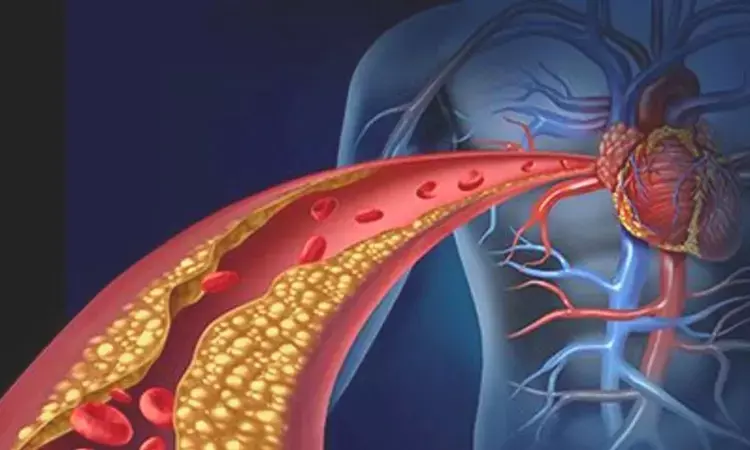- Home
- Medical news & Guidelines
- Anesthesiology
- Cardiology and CTVS
- Critical Care
- Dentistry
- Dermatology
- Diabetes and Endocrinology
- ENT
- Gastroenterology
- Medicine
- Nephrology
- Neurology
- Obstretics-Gynaecology
- Oncology
- Ophthalmology
- Orthopaedics
- Pediatrics-Neonatology
- Psychiatry
- Pulmonology
- Radiology
- Surgery
- Urology
- Laboratory Medicine
- Diet
- Nursing
- Paramedical
- Physiotherapy
- Health news
- Fact Check
- Bone Health Fact Check
- Brain Health Fact Check
- Cancer Related Fact Check
- Child Care Fact Check
- Dental and oral health fact check
- Diabetes and metabolic health fact check
- Diet and Nutrition Fact Check
- Eye and ENT Care Fact Check
- Fitness fact check
- Gut health fact check
- Heart health fact check
- Kidney health fact check
- Medical education fact check
- Men's health fact check
- Respiratory fact check
- Skin and hair care fact check
- Vaccine and Immunization fact check
- Women's health fact check
- AYUSH
- State News
- Andaman and Nicobar Islands
- Andhra Pradesh
- Arunachal Pradesh
- Assam
- Bihar
- Chandigarh
- Chattisgarh
- Dadra and Nagar Haveli
- Daman and Diu
- Delhi
- Goa
- Gujarat
- Haryana
- Himachal Pradesh
- Jammu & Kashmir
- Jharkhand
- Karnataka
- Kerala
- Ladakh
- Lakshadweep
- Madhya Pradesh
- Maharashtra
- Manipur
- Meghalaya
- Mizoram
- Nagaland
- Odisha
- Puducherry
- Punjab
- Rajasthan
- Sikkim
- Tamil Nadu
- Telangana
- Tripura
- Uttar Pradesh
- Uttrakhand
- West Bengal
- Medical Education
- Industry
AI tool can quantify coronary calcium scores and associated CV risk more rapidly than clinicians: Study

USA: A novel deep learning-based model can automatically quantify coronary artery calcium (CAC) and its ability to cause future adverse cardiac events by using low-quality positron emission tomographic (PET)/computed tomography (CT) scans, says a recent study. The study was published online in a recent JACC: Cardiovascular Imaging publication.
An accurate measure of atherosclerotic burden could be provided by assessing CAC by CT imaging. Coronary artery calcium is also visible in scans of CT attenuation correction (CTAC), always acquired with cardiac positron emission tomographic (PET) imaging. Considering this, Konrad Pieszko, Cedars-Sinai Medical Center, Los Angeles, California, USA, and colleagues aimed to develop a deep-learning (DL) model having the potential of fully automated CAC definition from PET CTAC scans.
For this purpose, the researchers adapted a novel DL model, initially developed for video applications to quantify CAC rapidly. Training of the model was done using a novel DL model, initially developed for video applications, in 4,331 patients from an external cohort who were going through PET/CT imaging with major adverse cardiac events (MACEs), including same-day paired scans of electrocardiographically gated CAC available in 2,737 patients. Analysis of MACE risk stratification was done in 4 CAC score categories (0, 1-100, 101-400, and >400), and expert observers derivation CAC scores from electrocardiographically gated CT (standard scores compared with automatic DL scores from CTAC scans.
The study yielded the following findings:
- Automatic DL scoring required less than 6 seconds per scan. DL CTAC scores provided a stepwise increase in the risk for MACE across the CAC score categories (HR up to 3.2).
- Net reclassification improvement of standard CAC scores was nonsignificant (−0.02) over DL CTAC scores.
- The authors observed similar negative predictive values for MACE of zero CAC with standard (85%) and DL CTAC (83%) CAC scores.
"DL CTAC scores predict cardiovascular risk comparably to standard CAC scores manually quantified by experienced operators from dedicated electrocardiographically gated CAC scans and can be obtained almost instantly," the researchers wrote, with no changes to PET/CT scanning protocol.
Reference:
The study, "Deep Learning of Coronary Calcium Scores From PET/CT Attenuation Maps Accurately Predicts Adverse Cardiovascular Events," was published in JACC: Cardiovascular Imaging.
DOI: https://doi.org/10.1016/j.jcmg.2022.06.006
Dr Kamal Kant Kohli-MBBS, DTCD- a chest specialist with more than 30 years of practice and a flair for writing clinical articles, Dr Kamal Kant Kohli joined Medical Dialogues as a Chief Editor of Medical News. Besides writing articles, as an editor, he proofreads and verifies all the medical content published on Medical Dialogues including those coming from journals, studies,medical conferences,guidelines etc. Email: drkohli@medicaldialogues.in. Contact no. 011-43720751


